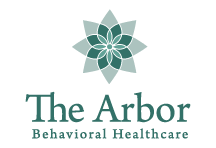I have worked in mental health and chemical dependency programs for about 25 years. It has been an interesting journey full of learning opportunities. One area that I have really enjoyed has been staff development. Over the years, I became aware of several common developmental phases that most staff go through. Furthermore, there seems to be a wall associated with each phase that a staff must break through to advance.
The Wall
Pain often accompanies when one approaches a wall. With the early developmental phases, pain frequently stems from not having a sufficient skill set to be effective with a client. The reason this is so painful is because most of us start out wanting to be that “Rock Star” staff member with all the answers. It hurts the first time we hit the wall with a challenging client.
Frustration Phase
A common developmental phase that is often seen with new (sometimes long-term) staff in residential chemical dependency treatment programs is the frustration phase. For many staff members the frustration begins coming to the surface when clients act out and/or refuse to follow rules. One can easily see why this is such a common phase because clients, by nature, act out and don’t follow rules. Hence, this is reason why they are placed in highly supervised residential facilities. Over the years, I have had hundreds of staff members present with indirect or direct requests to administratively discharge a client for acting out and/or not following program rules. I begin such exchanges by asking the staff member if he/she is frustrated. Initially, most will deny any frustration. But after a few minutes of discussion, the truth emerges.
The Turn
This sets the stage for the most important question. “What is it about You?” Explanation is given that frustration always stems from fear. “So what are you afraid of?” Most staff initially struggle to answer this question due to being so focused on the client’s behavior. The most common fears expressed are:
- not knowing how to handle situations,
- being viewed as incompetent/ineffective,
- losing control of the client milieu,
- other clients being negatively impacted, and/or
- being in physical danger.
The staff member can begin breaking through the wall of the frustration phase by simply acknowledging being afraid. The second step is to thoroughly explore the specific fear(s) which guides the introduction of new strategy. The final step of breaking through the wall is by exhibiting a real willingness by the staff member to incorporate the new strategies. As a supervisor, the breakthrough is a beautiful thing to witness.


